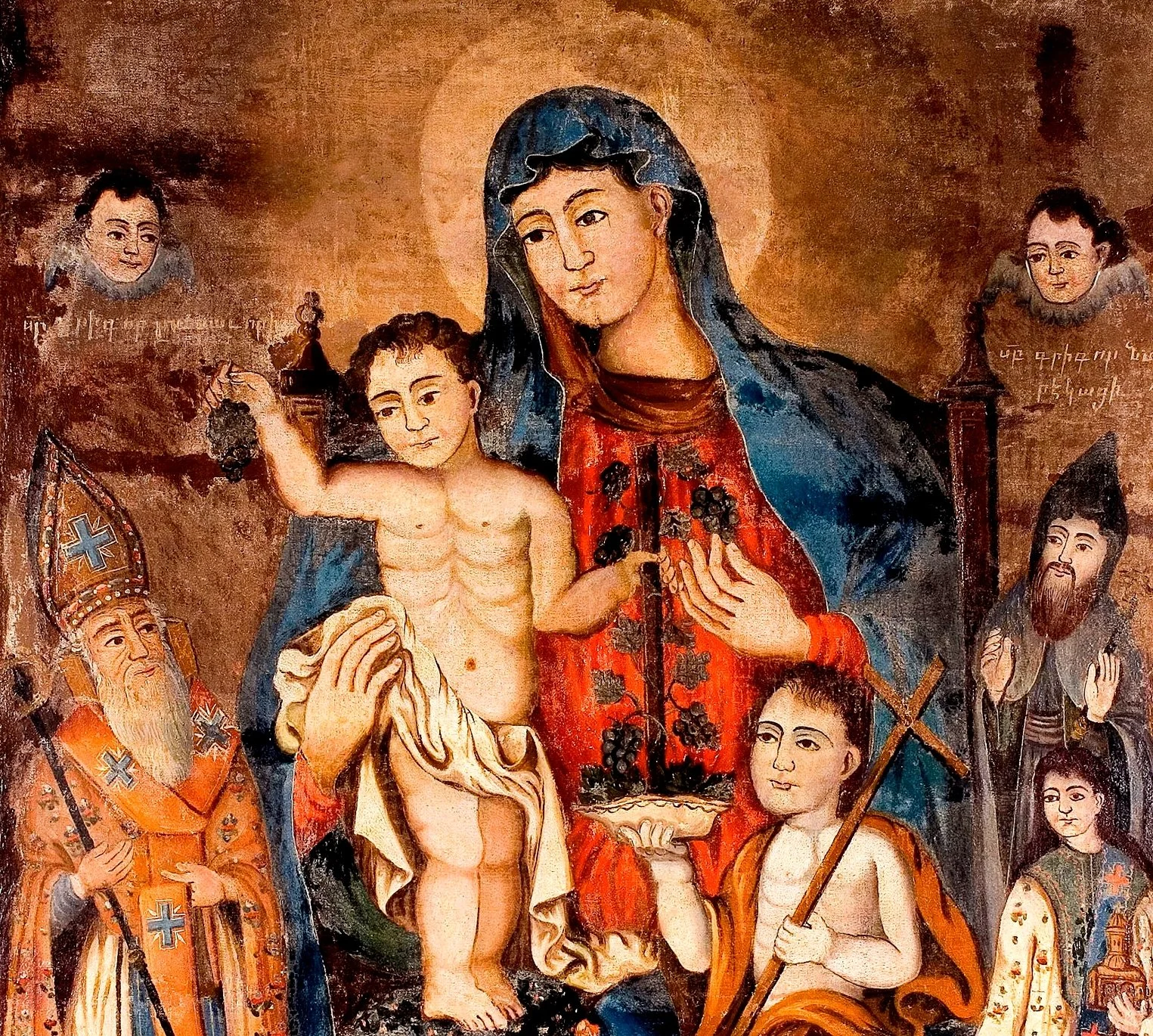ST. MARY, THE MOTHER OF GOD
Սբ. ԿՈՅՍ ՄԱՐԻԱՄ Աստուածածին
The Armenian Apostolic Church honors the Holy Mother of God, St. Mary, through seven special feasts celebrated throughout the liturgical year. These feasts reflect key events in her life, each rich in theological and spiritual significance. As our parish patron saint, St. Mary remains a source of inspiration and intercession for all the faithful.
1. The Conception of St. Mary by Anna
Celebrated on December 9, this feast commemorates the miraculous conception of the Virgin Mary by her mother Anna. Though not found in the Holy Scriptures, this event is preserved through sacred tradition. Saints Joachim and Anna, who were childless for many years, were visited by an angel who announced that Anna would conceive a child blessed among all nations. In gratitude, they dedicated their daughter to God even before her birth. This feast is a beautiful reminder that God's plan for salvation was set in motion long before Christ’s birth.
2. The Birth of St. Mary
On September 8, the Church celebrates the Nativity of the Holy Virgin Mary. Her birth was the answer to years of prayer and faith by her righteous parents, Joachim and Anna. The Church teaches that Mary was born to become the Theotokos, the Bearer of God, chosen for her purity, humility, and righteousness. Her birth is seen as the dawn of the salvation of humankind, a light preceding the coming of Christ, the true Light of the world.
3. The Presentation of the Three-Year-Old St. Mary to the Church
According to sacred tradition, Mary was brought to the Temple in Jerusalem at the age of three, fulfilling the vow made by her parents. She remained in the Temple until her betrothal to Joseph, dedicating herself to prayer and service. This feast, celebrated on November 21, symbolizes Mary's early dedication to God and her preparation for her divine role. The Armenian Church began officially commemorating this feast in the 18th century.
4. The Annunciation to the Virgin Mary
On April 7, the Armenian Church celebrates the Annunciation—the day Archangel Gabriel declared to Mary that she would bear the Son of God. Her humble response, “Behold, I am the handmaid of the Lord; let it be to me according to your word,” reveals her deep faith and obedience. Through Mary’s "yes," the divine plan for the Incarnation was fulfilled. Her role in salvation history began with that moment, making her the new Eve, through whom life, not death, entered the world.
5. The Assumption of the Holy Mother of God
The Feast of the Assumption, one of the five major feasts of the Armenian Church, is observed on the Sunday nearest August 15. According to sacred tradition, the Virgin Mary peacefully passed away in the presence of the apostles and was taken into heaven, body and soul, by her Son, Jesus Christ. Her tomb in Gethsemane was later found empty. On this day, the Blessing of Grapes ceremony follows the Divine Liturgy, symbolizing the first fruits offered to God. The Assumption proclaims the dignity of the Mother of God and the hope of eternal life for all who follow Christ.
6. The Discovery of the Belt of St. Mary
Celebrated on the second Sunday following the Feast of the Assumption, this feast recalls the miraculous rediscovery of St. Mary’s belt in Jerusalem during the reign of Emperor Arcadius in the 5th century. The relic, said to have healing powers, was venerated by generations of the faithful. The feast entered the Armenian liturgical calendar in 1774 and serves as a reminder of the physical and spiritual connection believers maintain with the Holy Mother.
7. The Discovery of St. Mary’s Box
This feast is observed on the fifth Sunday after Pentecost and commemorates the discovery of a box believed to contain a garment of the Holy Virgin. According to tradition, two noble brothers from Constantinople brought the box from Nazareth, where it had long been preserved by a Jewish woman. The relic worked miracles, and the Church established this feast to celebrate its discovery. It entered the Armenian calendar in the 18th century and highlights the reverence for relics associated with the Mother of God.
The Intercession of the Holy Mother of God
The Virgin Mary is not only the earthly mother of our Savior but also our heavenly intercessor. The Armenian Church teaches that she is the foremost among all saints, the “God-seeing eye” and “God-speaking tongue,” through whom the Light of the world—Jesus Christ—entered creation. Her intercession is powerful because of her closeness to her Son and her unshakable faith. As our parish’s patron saint, St. Mary is a constant source of hope, compassion, and spiritual guidance. Her motherly prayers uplift our community and each of our families, inspiring us to live lives of faith, humility, and holiness. May we always seek her prayers and follow her example of love and obedience to God.
This video, titled "Mother of God," from the "Bread & Salt" series by the Eastern Diocese, highlights the important role of the Virgin Mary in God's revelation and explores one of the Armenian Church's most beautiful services: the Blessing of the Grapes.

